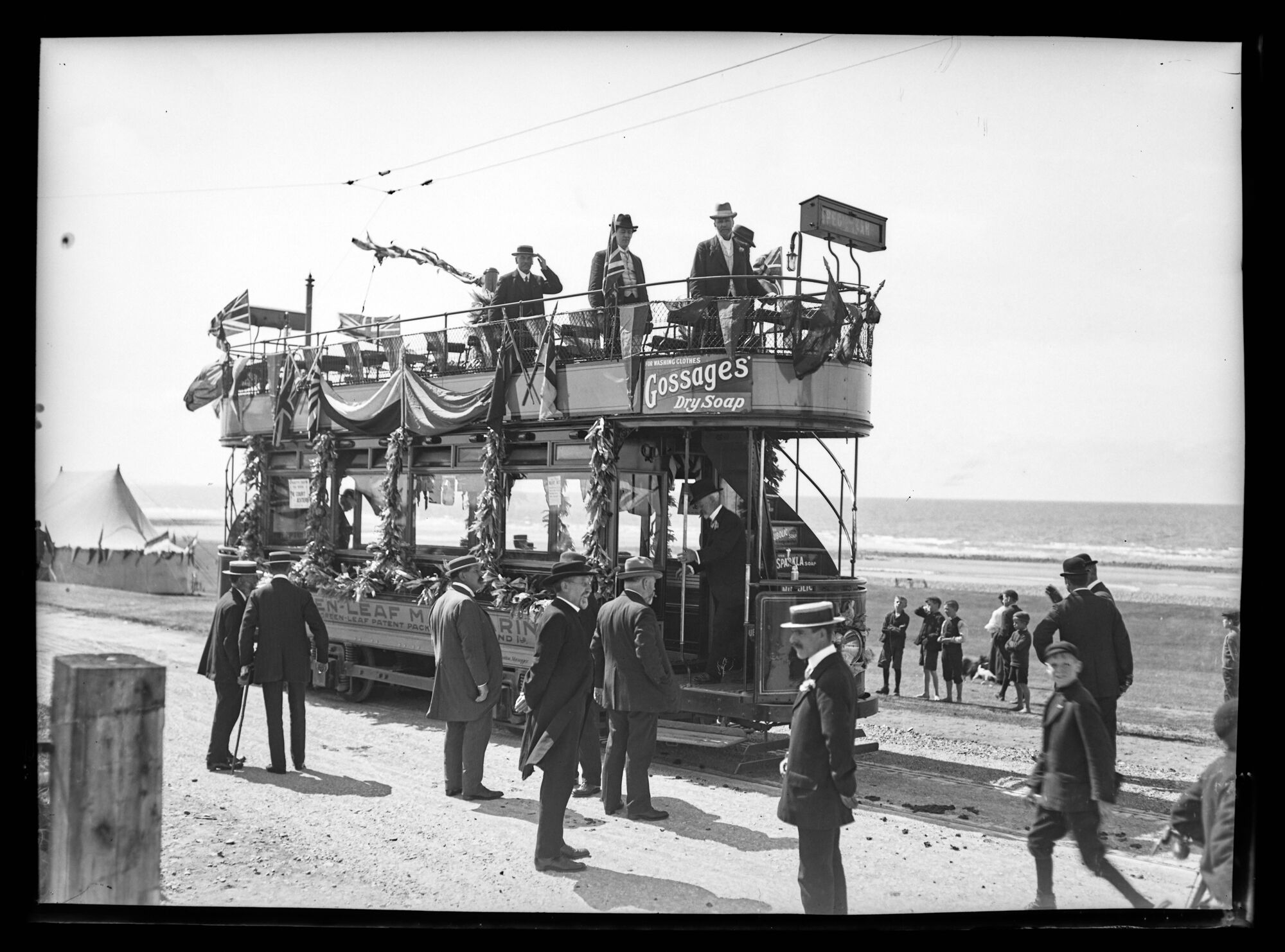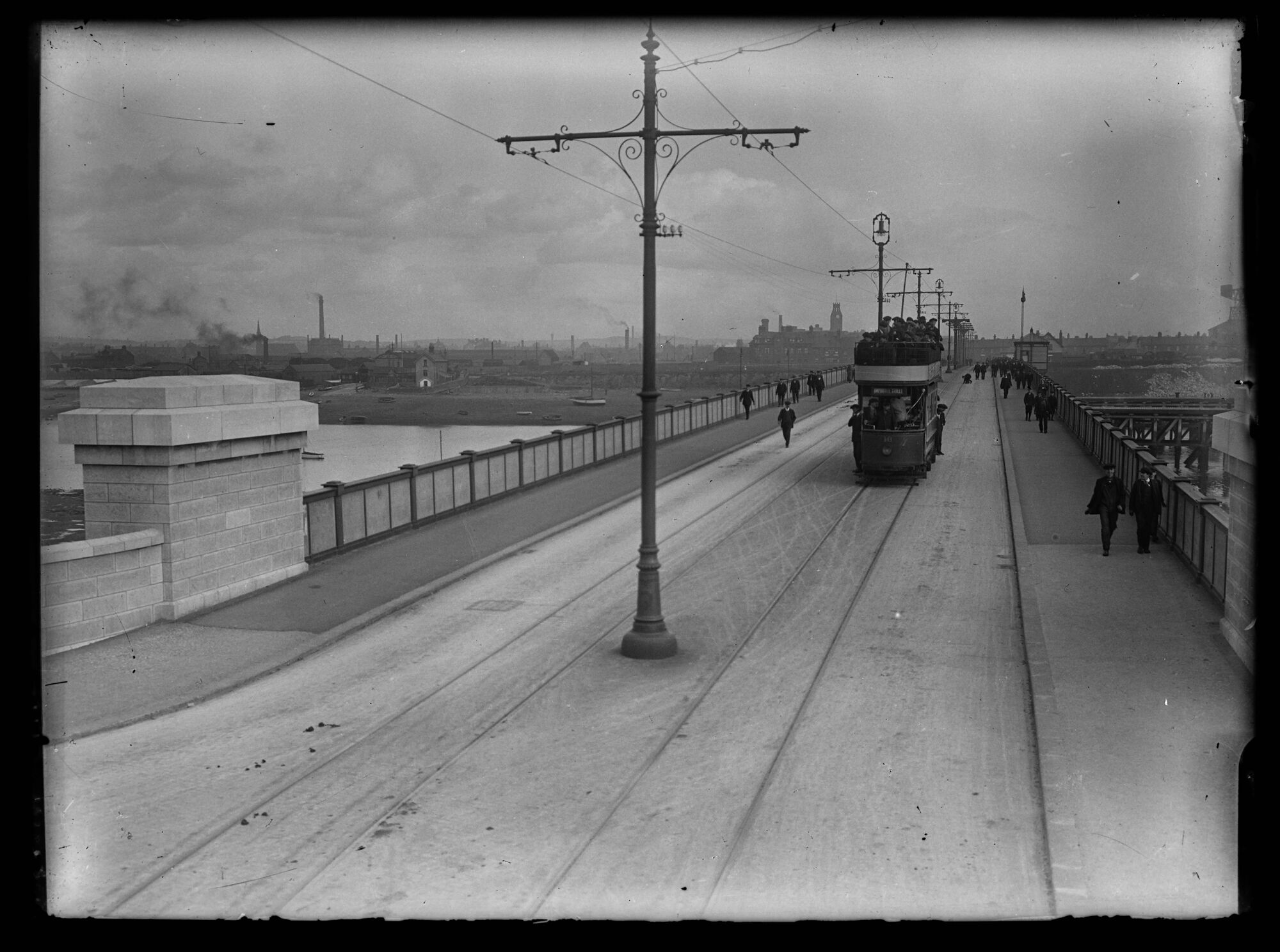Topics > County Durham > Civil Parishes in County Durham > Seaham Town Council > Seaham-Harbour, 1890
Seaham-Harbour, 1890
Extract from: Kelly's Directory of Durham, 1890
SEAHAM HARBOUR is a seaport town, and was formed into an ecclesiastical parish Nov. 17, 1843, from the parish of Dalton-le-Dale, 275 miles from London, 6 south from Sunderland, 12 north-east from Durham, and 15 north from Hartlepool, in the South Eastern division of the county, township of Dawdon, union of Easington, head of a county court district and petty sessional division, in the rural deanery of Houghton-le-Spring, and archdeaconry and diocese of Durham. Seaham Harbour and town were founded on the 28th November, 1828, when the first stone of the north pier was laid by Charles Williant, third Marquess of Londonderry, proprietor of the manor of Seaham, and that of the town by Viscount Seaham. The progress of the town has been remarkable; begun on one of the most desolate spots of the coast, where not a single habitation stood before, it has grown into a considerable place, with 1,150 inhabited houses; the harbour, which consists of two wet docks and one dry dock, and one tidal basin, allowing room for about 300 coasting ships, was designed to facilitate the shipment of the coals from his lordship’s collieries: the lighthouse is built upon a rugged piece of rock, and at the base is a red light, revolving every half minute, to distinguish this port from others: a life-boat, presented, by the Misses Carter, of Harrogate, was replaced in 1888 by a new boat belonging to the National Life Boat Institution: the town is governed by a Local Board of Health of nine members: the police arrangements are under the control of the chief constable of the county; the town is well paved, abundantly supplied with water by the Sunderland and South Shields Waterworks Co. and is lighted with gas from works situated on the southern outskirts of the town: there are three railways terminating at Seaham Harbour-the Londonderry, Seaham and Sunderland, opened in 1855, for passengers, general traffic and coals; the Bainton and Seaham, and the South Hetton and Seaham, for coals. The church of St. John the Evangelist, consecrated in 1841, is a building of stone in the Perpendicular style, consisting of chancel, nave, north aisle (added in 1860), south porch and an embattled western tower with pinnacles, containing a clock and one bell: at the east end of the aisle is a stained window, placed by the parishioners as a memorial to Frances Ann, Marchioness of Londonderry, who died 20th January, 1865: extensive alterations were made in 1885, under the direction of Mr. R. J. Johnson, architect, of Newcastle-on-Tyne, including the extension of the chancel, and the erection of a new chancel arch, organ chamber and vestries, the refitting of the chancel and other works the handsomely carved reredos, designed by the same architect, was erected at a cost of £300, as a memorial to the late Marquess of Londonderry, who died Nov. 5, 1884; the total cost of the works was about £3,000; there are 650 sittings. The register dates from the year 1845. The living is a vicarage, net yearly value £260, with house, in the gift of the Marquess of Londonderry K.G., P.C. and held since 1874 by the Rev. James Colling M.A, of Christ’s College, Cambridge. The Catholic church, dedicated to St. Mary Magdalene, built in 1870, is a plain edifice of brick, with terra cotta facings, and has a house attached for the priest. The Presbyterian chapel, in Adolphus street, has 310 sittings; the Primitive Methodist chapel, in Tempest place, 350 sittings; the Wesleyan chapel, in Tempest place, 300 sittings, and the Methodist Free church, in Church street, 600 sittings. A Cemetery, consisting of 4 acres, was formed in 1885, at a cost of £4,000, and has two mortuary chapels; it is under the control of a Burial Board of 9 members. There is a local Horticultural Society, which holds flower shows annually. A newspaper, called the “Seaham Weekly News,” is published every Friday. The Londonderry Literary Institute is a handsome structure of freestone of the Grecian Doric order, built in 1855, at a cost of £1,200, and placed at the disposal of the inhabitants by Charles William, third Marquess of Londonderry K.G.; it consists of a library, reading-room and lecture hall.: The Masonic Hall, in the North Road, is a brick building; the lodge meetings are held here, and a portion of the premises is occupied by a private club. The Infirmary is an edifice of stone, in the Gothic style, originally built by the late Frances Ann, Marchioness of Londonderry, in 1849 (with the proceeds of a book published by her ladyship), and added to at different periods; it has now 25 beds; it is supported from payments by the shipping, under the title of " Hospital money,” and the seamen of any ship entering the port are entitled to its benefits. The Marquess of Londonderry’s Harbour and Colliery office is a large stone building with a cupola, containing the requisite offices for his lordship’s extensive works. The town depends principally on the coal trade; but there are extensive bottle works, employing a large number of hands; also a foundry and chemical works. There as a branch here of Woods & Col’s bank at Newcastle, as well as a savings bank. The' acreage is 1,088; rateable value, £28,964; its population in 1841 was 2,036; in 1851, 4,642; in 1861, 6,137; in 1871, 7,132; and 1881, 7,714.
Petty Sessions are held at the Police court, Vane terrace, on Fridays at 11 a.m. as specially appointed. The following places are included in the division:-Cold Hesleden, Dalton-le-Dale, Hawthorn, Murton Colliery, Seaham Colliery, Seaham Harbour, & Seaton.
Places of Worship :-
- St. John’s Church, Rev. James Colling M.A. vicar.
- St. Mary Magdalene Gatholic, Rev. Joseph C. Fawell, priest.
- Presbyterian, Adolphus street, Rev. J. King, minister.
- Free Methodist, Church street, Rev. Jamas Dent, minister.
- Primitive Methodist, Tempest place, Rev. Tom Buttrick, minister.
- Wesleyan, Tempest place (Sans Street circuit, Sunderland).
Schools :-
- St. John’s National, Church street (mixed & infants’), partly erected in 1847 & 1856, at a cost of £1,000, the infants’ school being added in 1868 at a further cost of about £700, other additions being made in 1874, 1884-5 & 1889; the united schools will hold 800 children; average attendance, 674.
- New. Cottages (mixed), built in 1867, for 235 children; average attendance, 106.
- Catholic, Vane terrace (mixed), built in 1888, for 320 children; average attendance, 260.
- Ropery Walk (mixed), built in 1877, for 347 children; average attendance, 295.







